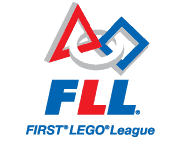Robot Design
When Sensors Are Not Needed
Some missions are located close to base. These missions can often be performed by robots that simply move forward and backward without having to turn in the process. Missions that are close to base may not require the robot to follow a complicated path to reach the mission model.
When Sensors Are Useful
Sensors can help to navigate to missions that are located near lines (light sensor), walls (ultrasonic sensor), or sturdy mission models (touch sensor).
Overall Shape
Often the robot must navigate around and between mission models. This may require the robot to be small enough to avoid obstacles and to make sharp turns.
Caster Wheels?
2 Wheels (with Skids)
Skids should be located at the back of the robot. If possible, try to balance the robot on the wheels with just a small percentage of the robot’s weight on the skids. The skid will create friction with the surface of the mat. The amount of weight placed on the skid may affect the performance of the robot in driving straight and making turns.
2 Drive Wheels (with Caster Wheel)
Many robot designs use two drive wheels with a free rotating caster wheel to help balance the robot. The amount of weight placed on the caster wheel may affect the performance of the robot in driving straight and making turns. Most of the robot’s weight should be placed directly over the drive wheels. The caster wheel should be used to help the robot from tipping over as it starts and stops moving.
There are dozens (if not hundreds) of caster wheel designs. See examples at:
4 Wheel Drive
Sometimes you just need a little extra traction to perform missions that may require pushing or pulling a mission model. The extra traction can be achieved by allowing 4 drive wheels instead of the usual 2. The robot will still use just two motors for navigation (left motor / right motor). However, each motor will control two wheels through the use of a gear or two. Steering is challenging when there are two tires on each side of the robot. In making a point turn, the robot needs all 4 wheels to slip to some extent in making their turn.
Skid Steering
Skid Steering generally works best if the skids are located in the back of the robot (i.e., the robot drags the skids as opposed to pushing them). The friction of the skids helps the robot to stay in alignment.
Steering Systems
Tank Treads
Tank treads need to be cleaned periodically as they gather dust and debris from the surface of the mat.
Size of Wheels
The basic decision with regard to the size of wheels is to use either “big” wheels or “small” wheels. There are real advantages and disadvantages to each.
Big WheelsWhile large wheels may help the robot to move faster, they may be more difficult for the robot to accurately make turns.
Small WheelsWhile small wheels may help the robot to move with more traction, they take more rotations and time to move the robot the same distance.
Gearing Down / Gearing Up
